1.9s breaks 100! Brief analysis of Koenigsegg Gemera technology
[car home Technology] Today’s technology may still be far from us, but it is precisely because of its announcement of mass production that I personally think it has epoch-making significance in some technical details. So what is the core of today’s talk? To sum up in one sentence: Who gave "Feng Tu" (founder of Koenigsegg: Christian von Koenigsegg) the courage to sell a three-cylinder hybrid car for more than one million euros?

○ 30s Understand technical points.
1. This is a four-wheel drive hybrid car that can be "directly driven".
2. It is "1000 horsepower" and "100 horsepower" for 1.9s, and it has four seats.
3. It is inextricably linked with Evergrande and Qoros.
4. It has no gearbox and the engine has no camshaft.
5. It has only three cylinders, but it has two turbines.
6. It sells for 1.38 million euros.
○ Let’s take a look at how it is realized.
The acceleration level of 0-100km/h is less than 2s. What impressed me last time was Tesla Roadster, a pure electric sports car that has not yet been put into production, and that car also claims to have a torque of 10,000 Nm. It can be said that it has earned enough attention and is full of gimmicks. Regarding the concept of torque on wheels, don’t think it’s great to "break thousands" on wheels, but anyone who knows the concepts of "transmission ratio" and "deceleration and torque increase" should know what I’m talking about. )
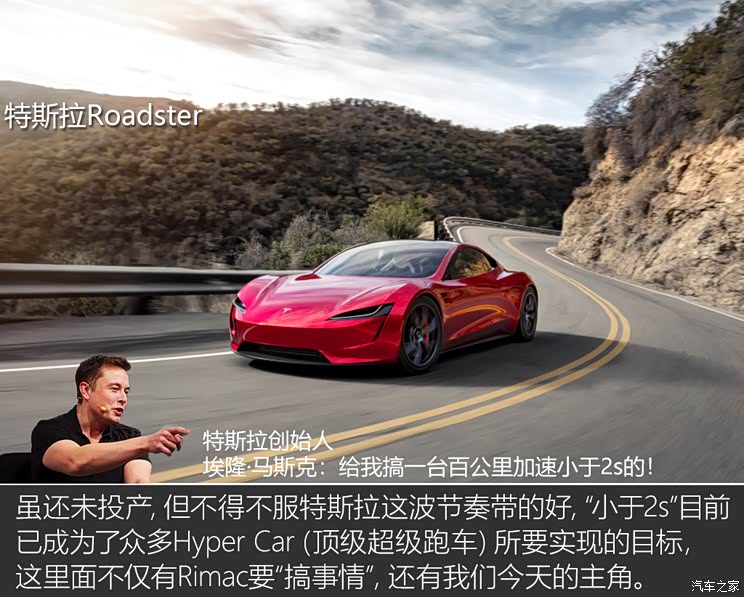
Let’s not worry about whether the actual test results can be achieved so fast, even if we take "entering 2s" as the target result, it will be difficult to land. This is not a simple matter of "brushing a computer from 7s to 5s". The difficulty of shortening the time from 3s to 2s at 0-100km/h is not something that can be solved by "increasing horsepower without brains" at all. It involves many factors such as tire grip, starting torque control, aerodynamics, body and suspension strength, and it takes great energy and huge sums of money to complete every acceleration shortened by 0.1s.
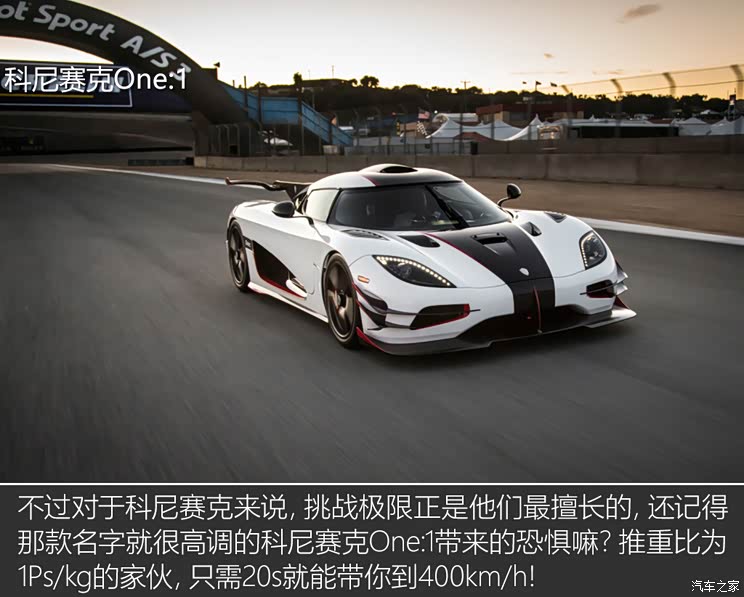
However, it is not easy to achieve this acceleration in a four-seater car. For this reason, Koenigsegg has already prepared: using the hybrid system on Koenigsegg Regera, let the motor and gasoline engine push this big guy together. Adding a motor seems to be a good solution, but as long as you know a little about the founder, you know that this "Viking madman" will definitely not use these "traditional" solutions on Toyota Prius or McLaren P1, but adopt a magical solution called KDD(Koenigsegg Direct Drive) system (want to know more about Koenigsegg Regera and KDD technology? Click me for more details)
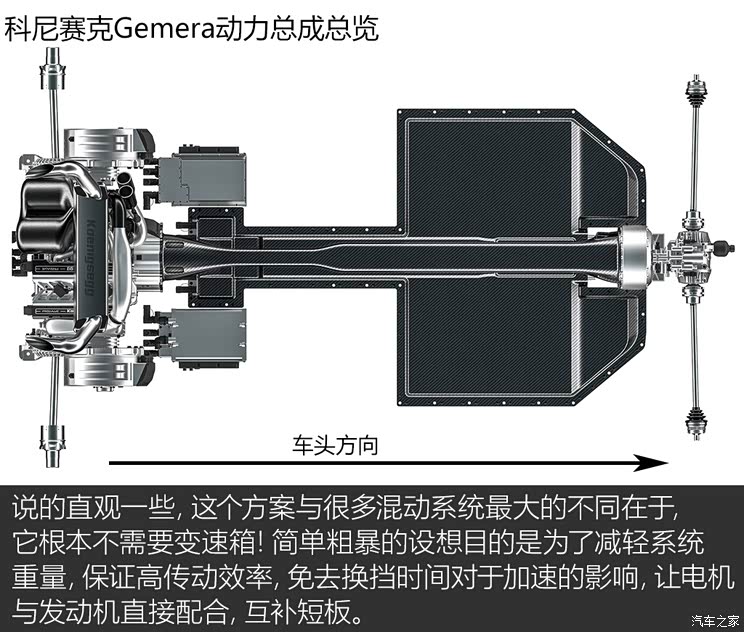
This idea is really crazy, relying on a fixed transmission ratio to achieve horrible acceleration. This idea is quite popular in the linear acceleration race of Top Fuel in North America (although it is not a single fixed gear ratio, there are only two or three gears to ensure acceleration). But if you think Koenigsegg (|) is just "changing the shell" Regera, then I can only say that you are too Naive.
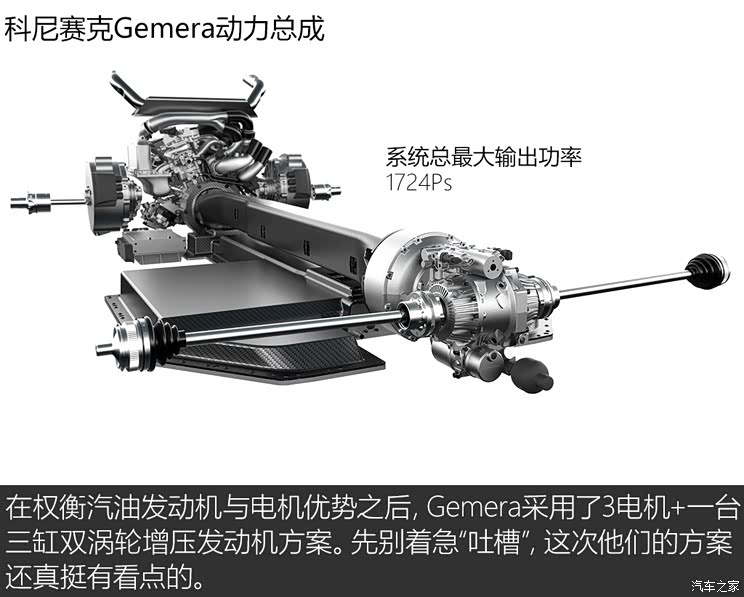
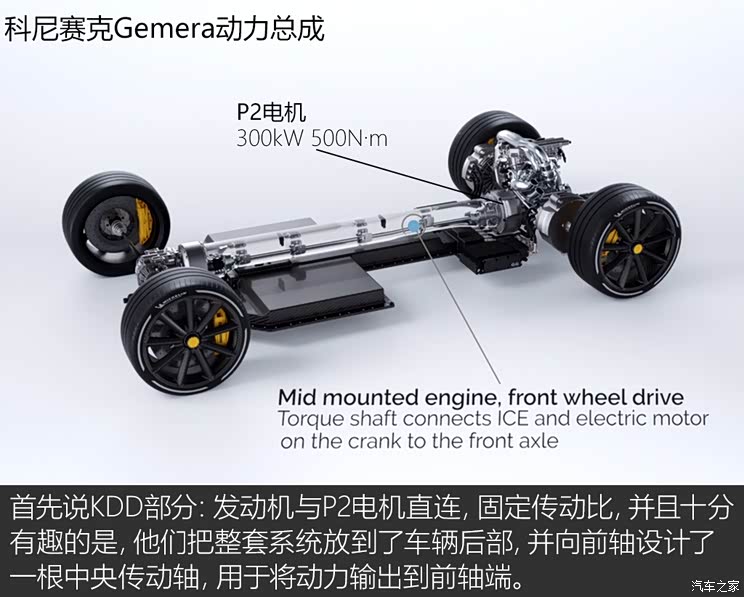
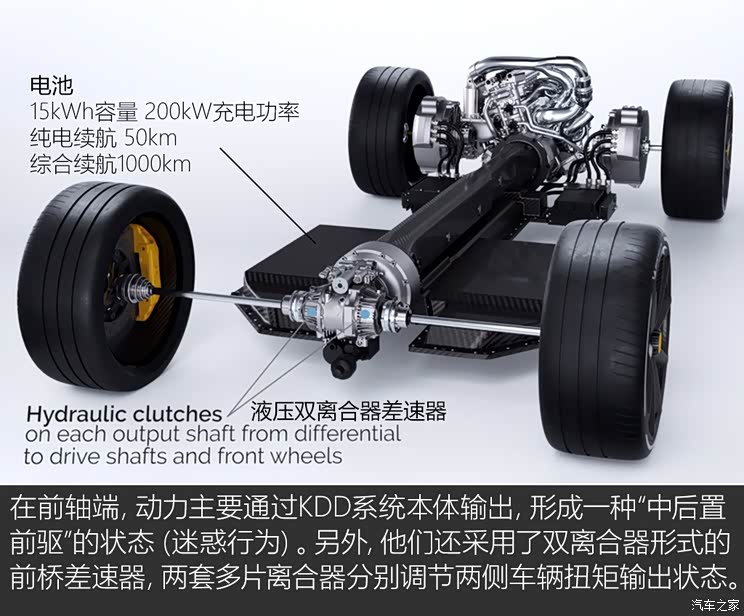
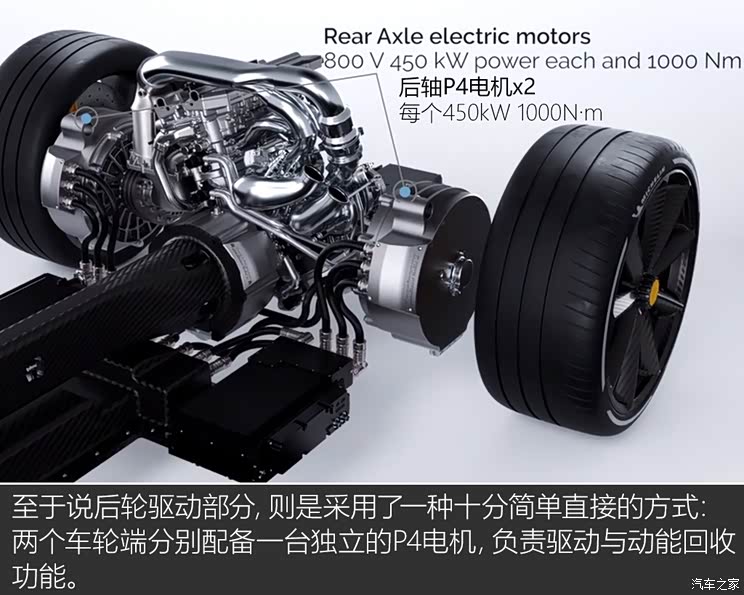
In this way, Koenigsegg Gemera can realize four-wheel drive, the front axle is driven by KDD system, and the rear axle is driven by two P4 motors. Under different working conditions, theoretically, it can realize three driving modes: front drive, rear drive (pure electric state only) and four-wheel drive. From a certain point of view, this is an evolution based on Regera, but I still don’t understand why the middle and rear engine scheme is used …… "Cloud guess" may be due to ensuring that the front axle and half axle are equal in length and geometry, so that torque steering will not occur when starting, and balancing the counterweight.
○ Koenigsegg, you big eyebrows and big eyes actually use a three-cylinder machine!
Don’t worry about it! At the beginning, I once planned to talk about Koenigsegg’s rather confusing practice, but I was lost in thought until I found that "FreeValve" was written on this engine.
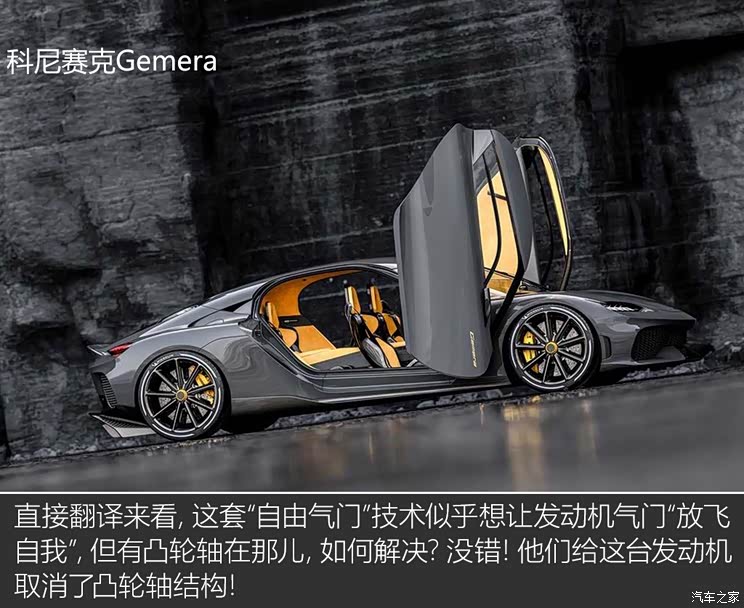
This may be the first camshaft-free engine in the world! I’m asking you if you’re satisfied with this alone? "Viking madman" lives up to its reputation. But don’t rush to brag about this technology, because I will tell you a fact that you will feel particularly proud: this technology has a very close relationship with a China brand-Qoros.

In fact, for camshaft-less technology, I believe many big car companies have technical reserves, but it depends on the story of Koenigsegg and Qoros. To put it simply, Koenigsegg and Saab jointly invested in a company called Cargine Engineering in 2000, and started to optimize the valve timing adjustment technology. In 2003, the first Saab 9-5 equipped with camshaft-free technology began road test; In 2009, Koenigsegg acquired Cargine Engineering and renamed it FreeValve. On the Qoros side, it is because when Chery independently developed the engine, it cooperated deeply with a famous engine development company, AVL Liszt, and AVL Liszt is the most important partner of FreeValve. As a result, Qoros and Koenigsegg "worked together" and installed the camshaft-free engine on Qoros 3 for testing. (For details, click the following link: the story of Qoros and Koenigsegg/the first trial of Qoros camshaft-less engine)
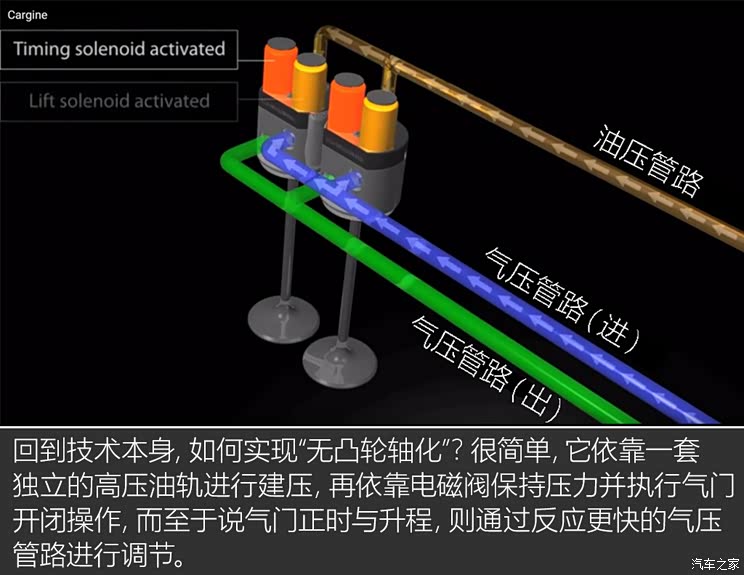
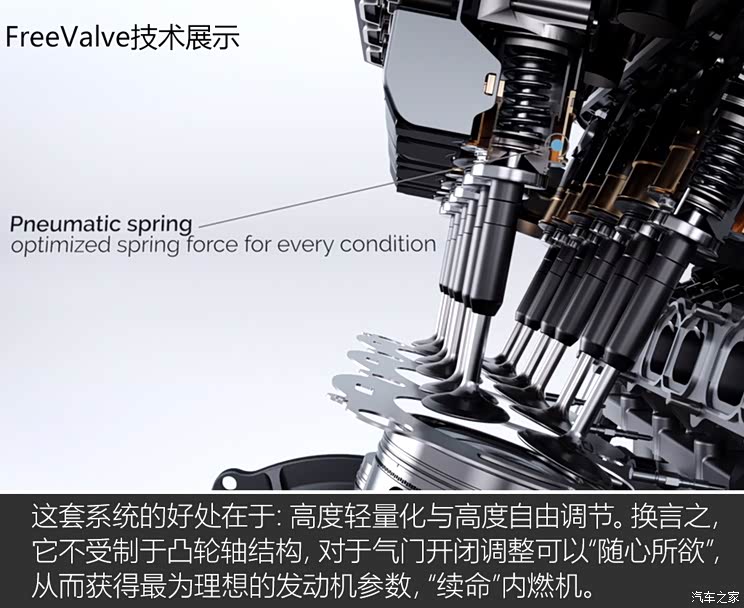
With this "dream" scheme, it is easy for the engine to get high power, high thermal efficiency and low fuel consumption in theory, which can definitely be regarded as one of the most revolutionary technology decentralization in recent years, so that the internal combustion engine can "fight for another half century"!
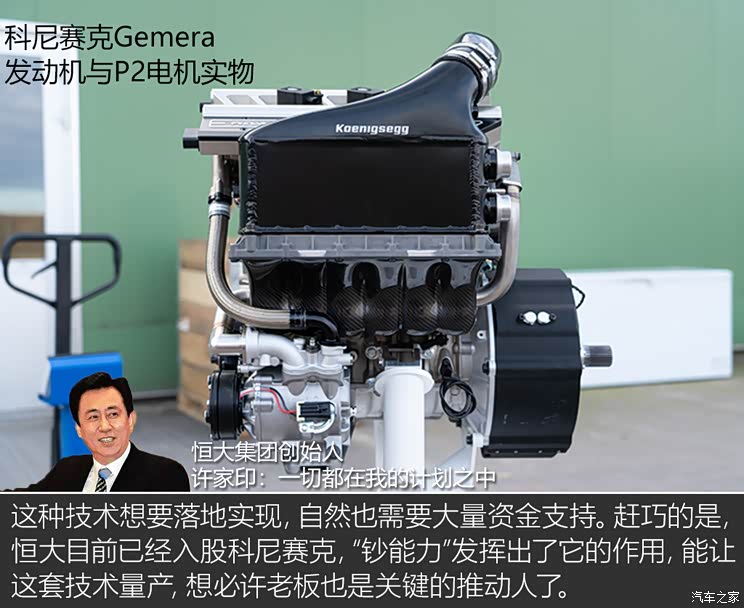
Of course, this system also has some problems: reliability and working logic. The former believes that a good result has been obtained after years of testing, otherwise Koenigsegg will not rush to load the car, while the latter will make the engine calibration engineer have a headache, and the realization of ideal parameters needs to take into account many problems. The traditional camshaft structure has a very mature scheme. Without the camshaft, the valve control and adjustment work will become very complicated, but any mistake will have incalculable consequences.
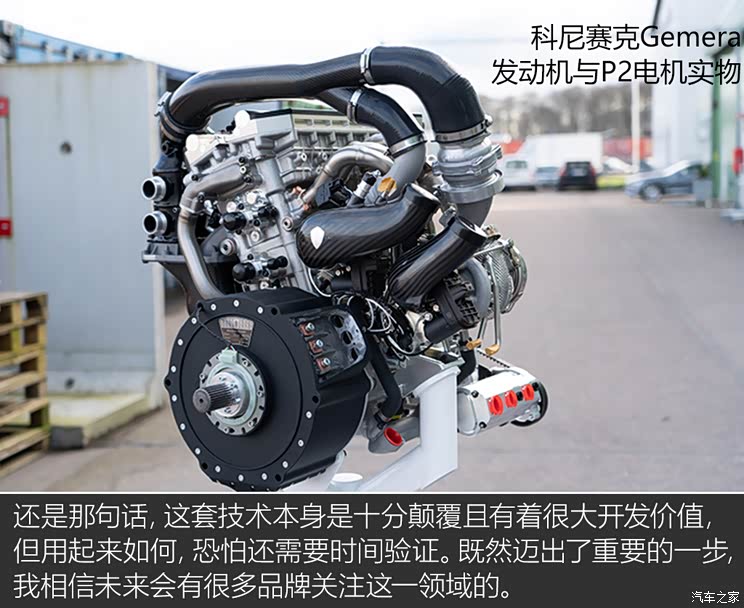
In addition, there is a relatively unpopular concern: a three-cylinder engine with dual turbochargers. This may sound like nothing, but it seems that there are few such schemes for odd cylinders with twin turbines. The simple reason is how to balance the intake and exhaust stability of odd cylinders with two turbines. Even cylinders can be evenly distributed. What should be done with odd cylinders?
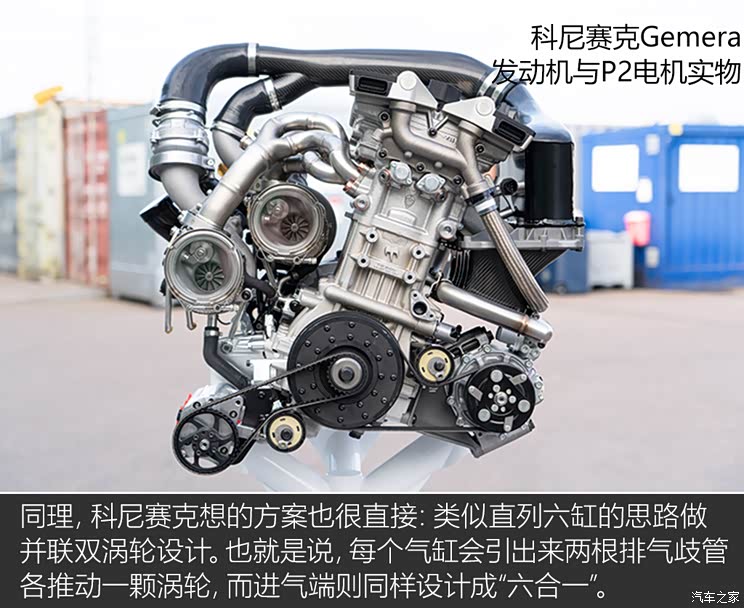
To sum up, this engine has many points of view in valve structure and supercharging design, and even can be regarded as two new outlets for small displacement engines in the future. Together with the cooperation scheme of KDD system and motor, everything looks very powerful except the powertrain engineer. Of course, the price of more than one million euros is also scary. You have everything in your dreams. Go to bed early.
Editor’s summary:
This is not just a three-cylinder hybrid car. In my opinion, its technical route seems to have opened up a new idea for many car companies: hybrid oil and electricity can save the transmission mechanism, even if the speed regulating motor can be integrated into one to complete the work; In the part of internal combustion engine, the camshaft-free design and the three-cylinder twin-turbine scheme also have a lot to talk about. These not only realize new ideas for high-performance cars in the future, but also have great significance for internal combustion engines and hybrid technologies. Again, it’s not that I don’t agree with pure electric vehicles, but the potential for internal combustion engines and hybrids to be developed is too great. (Text/Figure car home Shu Ning)